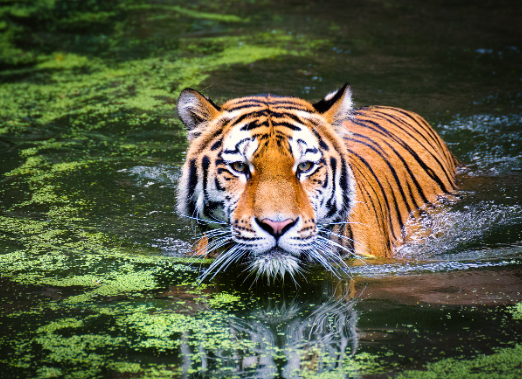The Royal Bengal Tiger: A Majestic Icon of Wildlife
The Royal Bengal Tiger is not just another big cat; it is a symbol of grace, strength, and the urgent need for conservation. As one of the largest tiger subspecies, this magnificent animal roams the dense forests and grasslands of India, Bangladesh, Nepal, and Bhutan. Understanding the habits, habitats, and the conservation efforts surrounding these tigers is crucial for their survival and our environment.
Habitat and Range of the Royal Bengal Tiger
Royal Bengal Tigers primarily inhabit tropical and subtropical forests, mangroves, and grasslands. They are most commonly found in India’s Sundarbans, a UNESCO World Heritage Site with an extensive network of tidal waterways and mudflats. Their environment plays a significant role in their survival; the dense foliage provides excellent cover for hunting, while wetlands offer abundant prey. However, habitat loss due to deforestation and human encroachment poses a significant threat to their existence. Protecting these habitats is essential not just for tigers but for maintaining a balanced ecosystem.
Diet and Hunting Behavior
Royal Bengal Tigers are carnivorous and primarily feast on deer, wild boar, and other ungulates. Their hunting strategy is both stealthy and powerful; they rely on their keen eyesight and acute sense of hearing to stalk prey before launching a rapid attack. Tigers tend to hunt alone, marking their territories to keep competitors at bay. Interestingly, they can consume up to 40 pounds of meat in one meal, showcasing their immense strength and adaptability. Understanding their dietary habits can help conservationists in creating better management plans to ensure healthy populations of both tigers and their prey.
Conservation Efforts and Challenges
With fewer than 3,900 Royal Bengal Tigers left in the wild, conservation efforts are more critical than ever. Several organizations and governments have initiated programs to protect their habitats, enforce anti-poaching laws, and create wildlife corridors to connect fragmented habitats. Despite these efforts, challenges remain, including poaching, human-wildlife conflict, and climate change. Engaging local communities in conservation initiatives is crucial, as is raising awareness about the importance of protecting this iconic species. By participating in or supporting such efforts, individuals can make a meaningful impact on the future of the Royal Bengal Tiger.
In conclusion, the Royal Bengal Tiger is not only a breathtaking creature but also a vital part of our ecosystem. By learning about their habitats, diet, and the conservation challenges they face, we can take informed steps toward ensuring their survival. If you’re passionate about wildlife and conservation, consider getting involved with local organizations or spreading awareness about the importance of protecting these magnificent animals. Together, we can help secure a future for the Royal Bengal Tiger and the ecosystems they inhabit.

